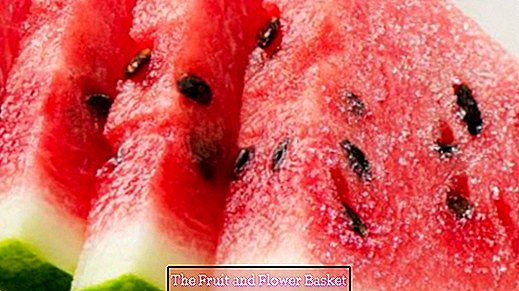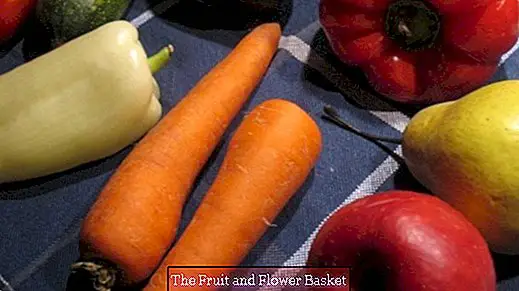The watermelon - a refreshing fruit
The watermelon is a very refreshing fruit and therefore especially popular in summer. The juicy berry fruit belongs to the cucurbit family, it is a crop and has its origins in Africa. Because of its hard shell, it is also referred to as Panzerfrucht.
characteristics
The pulp is juicy and firm, the taste is aromatic and sweet. Watermelons weigh about 4-25 kg, but there are also some that weigh only up to about 1 kg, so-called "fridge" melons ?, which fit great in a refrigerator (for example, the variety? Sugar Baby?).
A watermelon can weigh up to 100 kg and contain about 95% water. There is a lot of vitamin A and C in the fruit fibers of the watermelon. They therefore have hardly any calories, about 24 kcal per 100 g.
Watermelons have a low sodium content, which, together with the water content, cleanses and dehydrates the kidneys. In addition, the kernels of the melon contain vitamins, minerals, fat and protein. That is, with many unpopular cores you can eat.
Appearance of watermelon
- Watermelons are light to dark green, may be monochrome, striped or marbled.
- Most varieties have a red pulp, but there are also yellow and white or orange and green varieties.
- The shape is spherical to oblong or cylindrical.
Important varieties
There are two main varieties available on the market: Sugar Baby and Crimson Sweet
ancestry
The watermelon is originally from South Africa. Today it is grown worldwide, in tropical and subtropical areas. Cultivation countries are China, Turkey, Brazil, USA and Spain.
Uses of watermelon
- Watermelons are a very refreshing and thirst quenching fruit and are therefore usually eaten raw. Sometimes in Africa they are also cooked.
- You can simply spoon out the pulp or loosen it from the peel and cut it into small cubes. To halve and quarter the melon beforehand.
- There are many delicious watermelon recipes, for example, you can make smoothies or punch with it, also ice or fruit sorbet is made of it.
- Just pureing the pulp gives you a delicious drink.
- In southern areas, the watermelon is also boiled down to syrup or fermented into alcoholic beverages.
- The seeds, or seeds of the watermelon, are also sometimes used. They are ground, for example, in India or Africa and processed into bread or roasted.
- The bowl can be inserted or candied.
- Gained watermelon kernel oil (Ootanga oil) is used as a cosmetic supplement.
Storage of watermelon
One whole watermelon can be kept in the fridge for up to 3 weeks. Sliced melons stay in the fridge for up to 3 days. They should be covered (cling film). If the watermelon is eaten promptly, it can be removed outside the refrigerator.
Recognize the maturity of the watermelon
A small test to see if the watermelon is ripe: If it sounds hollow and dull when knocked on the shell, it is ripe. Immature melons hardly make a sound.
If the watermelon has a yellowish, pale spot, this means that the melon has been harvested ripe and is therefore a good sign. This place is formed where the melon is located. If this point is missing, it means that the melon was harvested immature. It is not sure if she can ripen enough.
Watermelons can often be purchased also cut open; You can see especially well if it is ripe. The pulp should have a uniform red or pink tone.
Season of the watermelon is due to its large circulation area all year. In Germany it is available especially in the summer months.
The watermelon is no longer fresh when the stem is brown to black discolored and moist.
If you have never tried a watermelon, you should definitely try it. It is a delicious and great fruit and a great refreshment.





